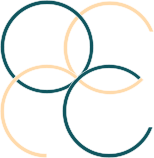I’m thrilled and deeply grateful to share that I’ve been recognized by Portland Monthly as a Top Doctor in Plastic Surgery. This award means a lot—not just as a professional milestone, but as a reminder of the trust my patients and the health care community place in me and my team at Oregon Cosmetic and Reconstructive Clinic.
Being honored as a “Top Doctors” feels extra meaningful as a solo, boutique practice. Every consultation, surgery, and follow-up visit reflects our commitment to personalized, thoughtful care.
What Does the “Top Doc” Award Mean?
Each year, Portland Monthly surveys thousands of medical professionals across Oregon to nominate peers they trust most for patient care. These votes are tallied and reviewed, with attention to board certification, reputation, and patient outcomes.
It’s humbling to be chosen among so many dedicated surgeons who serve our community. The metrics for this recognition reflect not just surgical skill, but also communication, safety, and compassion—qualities that guide everything we do at Oregon Cosmetic and Reconstructive Clinic.
.
Why This Recognition Matters for My Patients
Awards are a nice honor, but for me, the real reward is seeing patients heal and thrive after surgery. Every person’s story is unique—whether they’re recovering from an injury, undergoing breast reconstruction after cancer, or choosing a cosmetic procedure to feel more confident in their skin.
At our clinic, I focus on education and empathy. I take the time to listen, explain, and guide patients through each decision. Recognition like this reinforces that compassionate, individualized care truly improves outcomes.
Gratitude and Ongoing Dedication
I’m so grateful to everyone who has supported me along the way—patients, colleagues, family, and my amazing team. Even after years in practice, I’m still inspired by the transformations I witness every day. Surgery is about healing, confidence, and connection.
Being recognized as a “Top Doctors” is an honor, but the real joy comes from guiding people through their own health journeys and watching them regain comfort and confidence.
Looking Ahead
As our field continues to evolve with new technology and techniques, I remain excited to learn and innovate. Whether I’m refining a reconstructive approach or improving recovery protocols, I’m always asking–How can we make this even better for patients?
Thank you again to the Portland Monthly team and the Oregon medical community for this recognition. Most of all, thank you to my patients—you’re the reason I love what I do every day.

